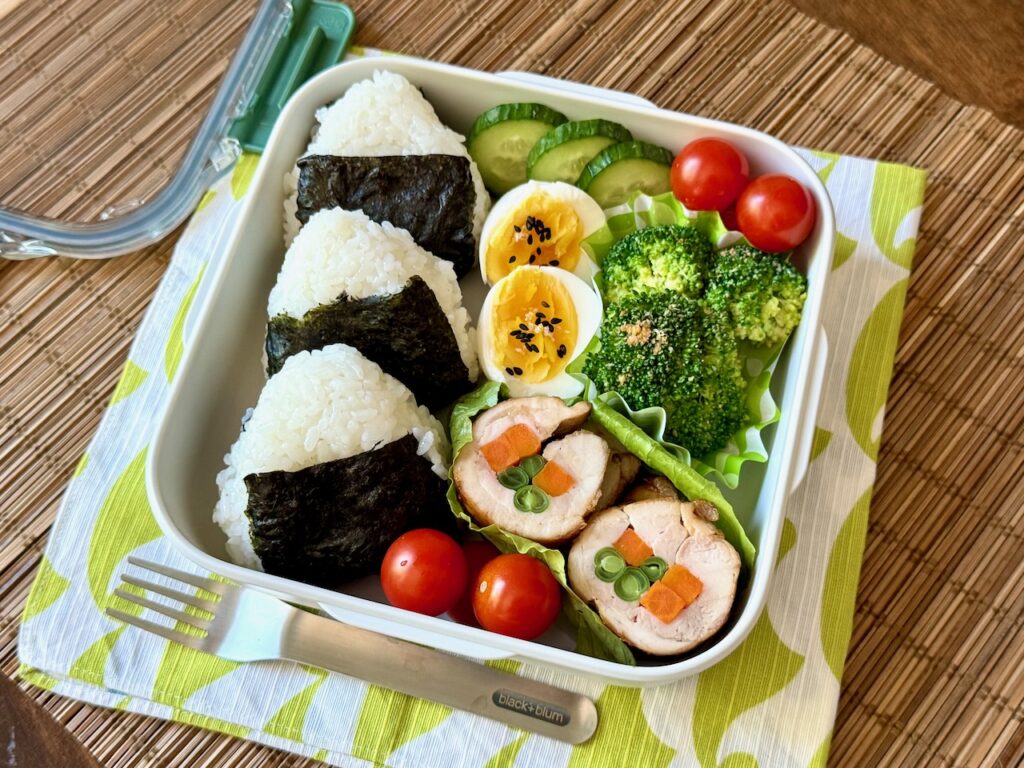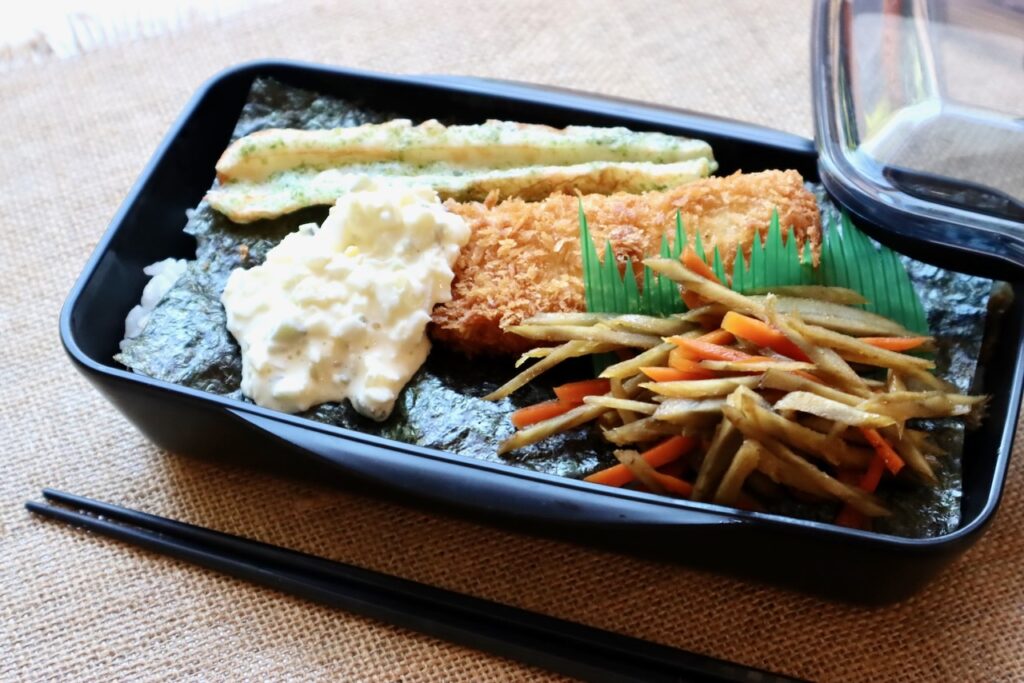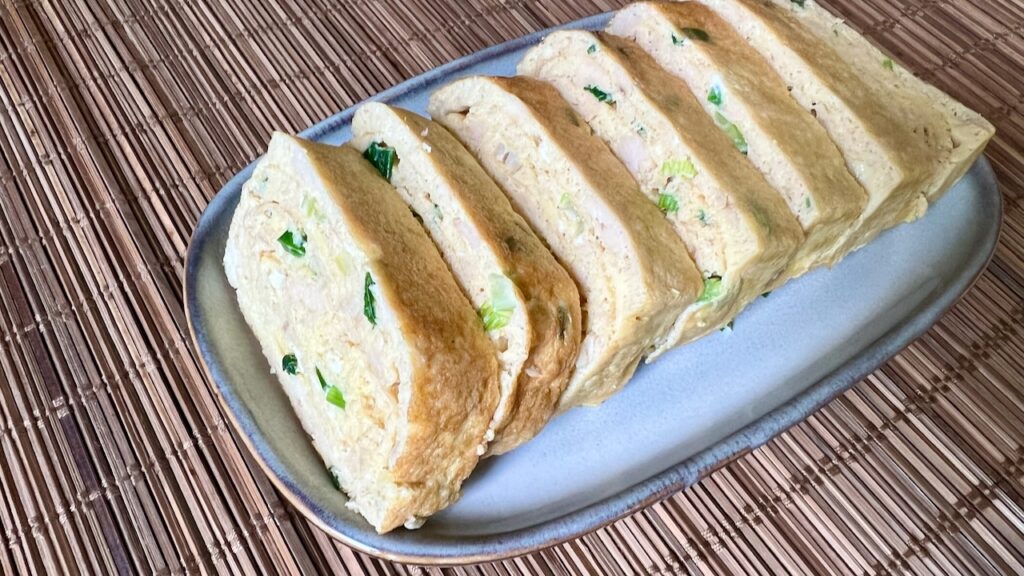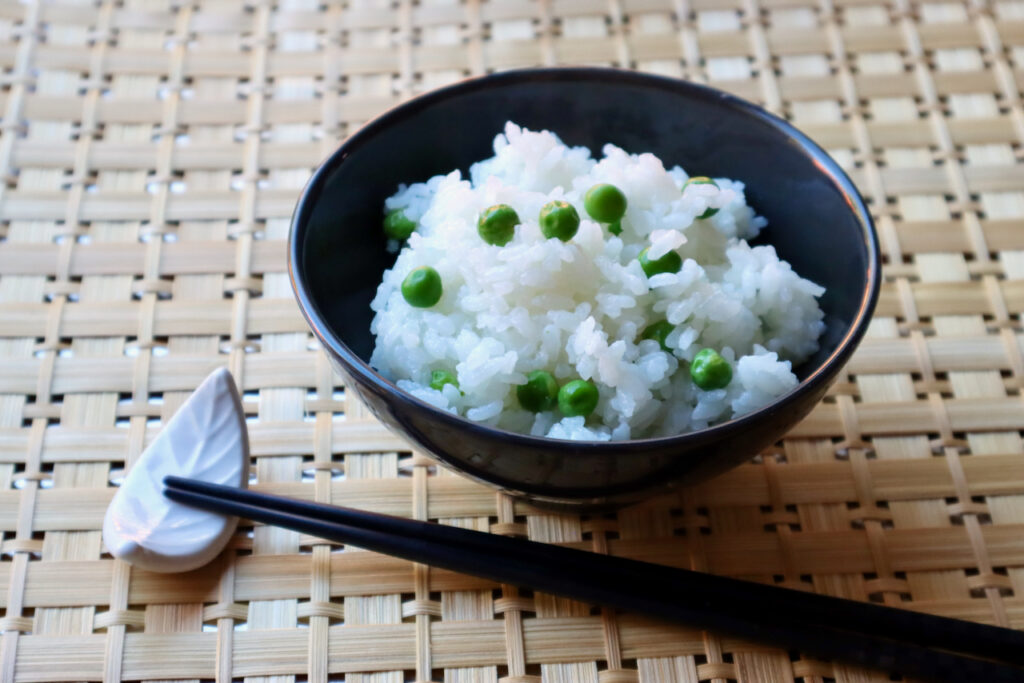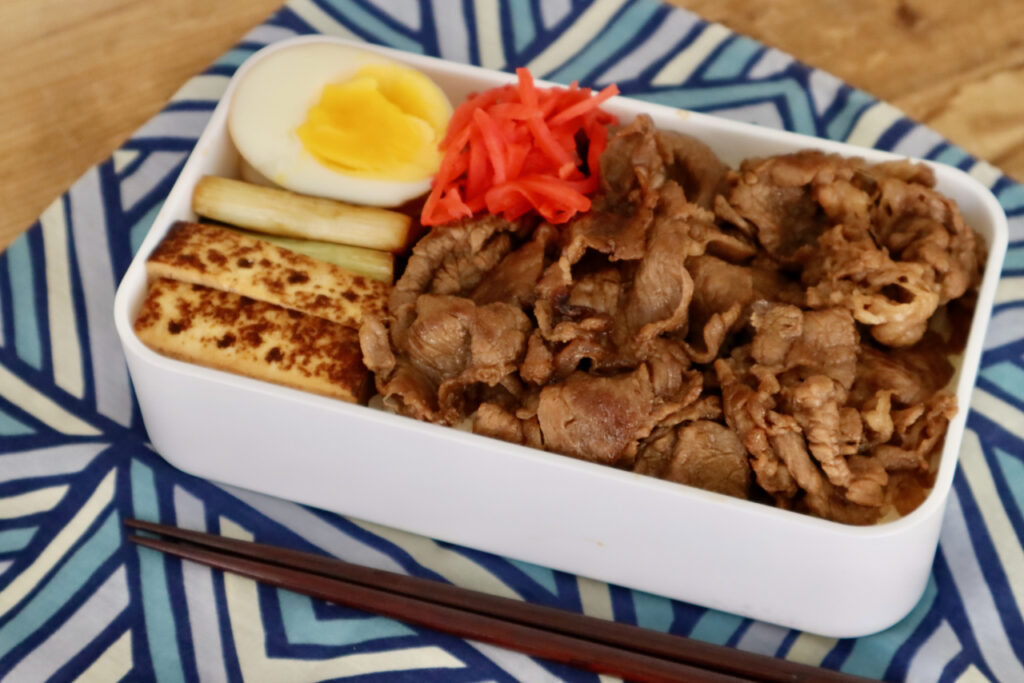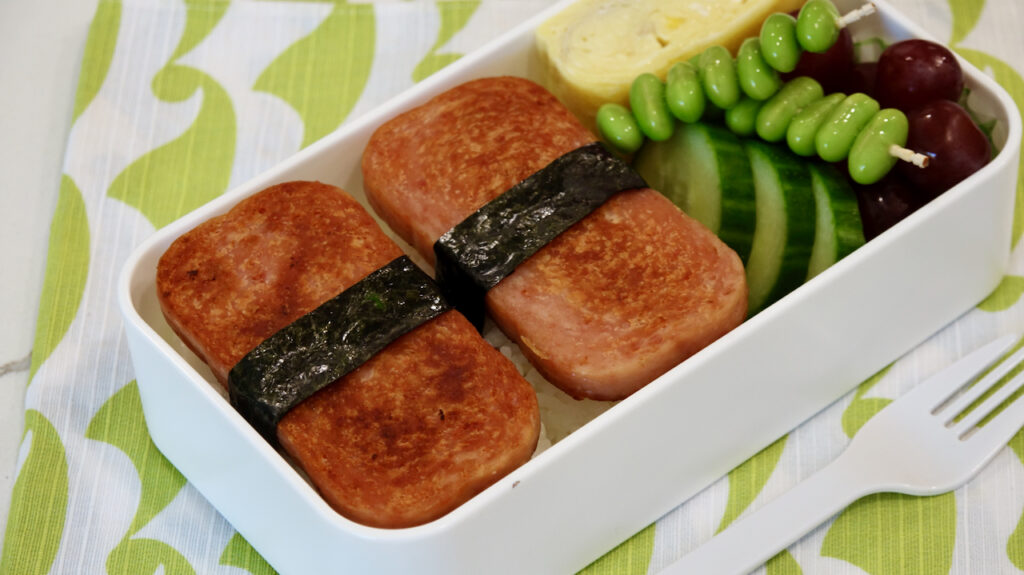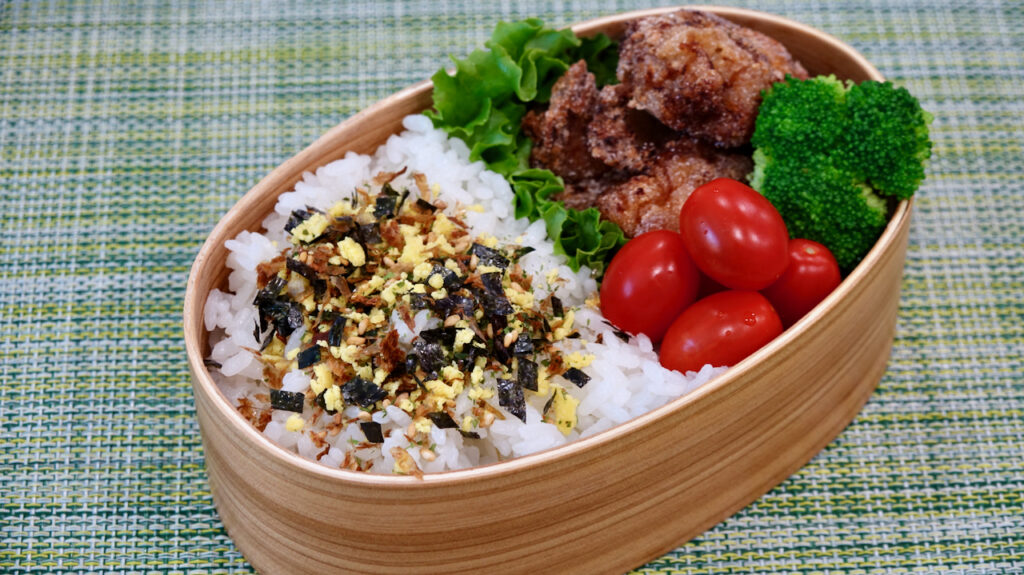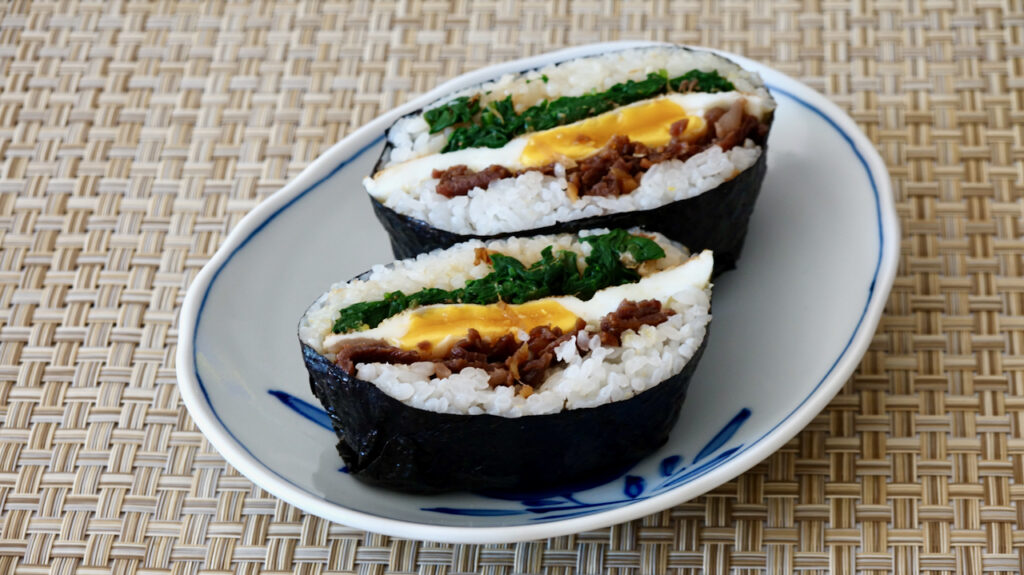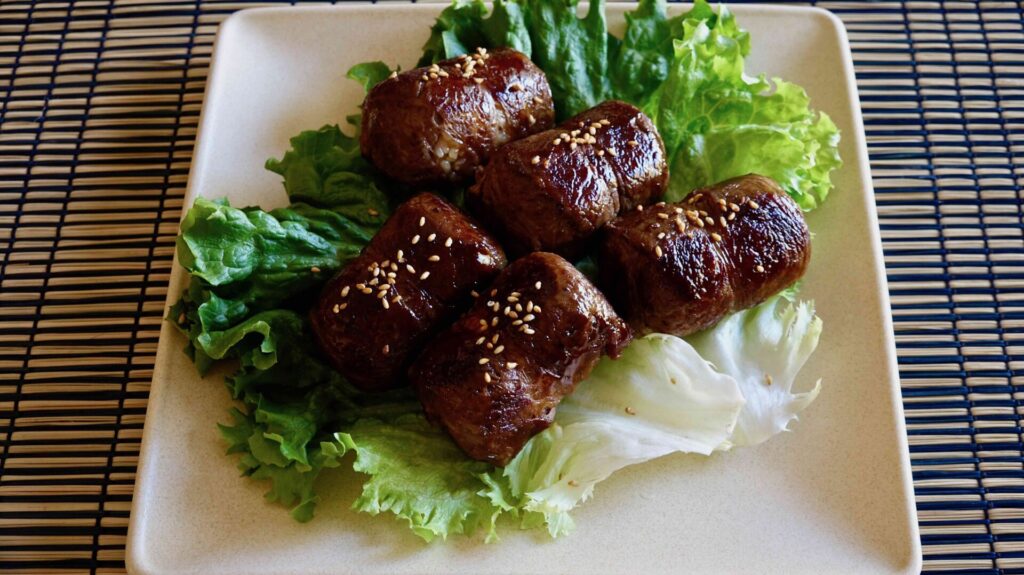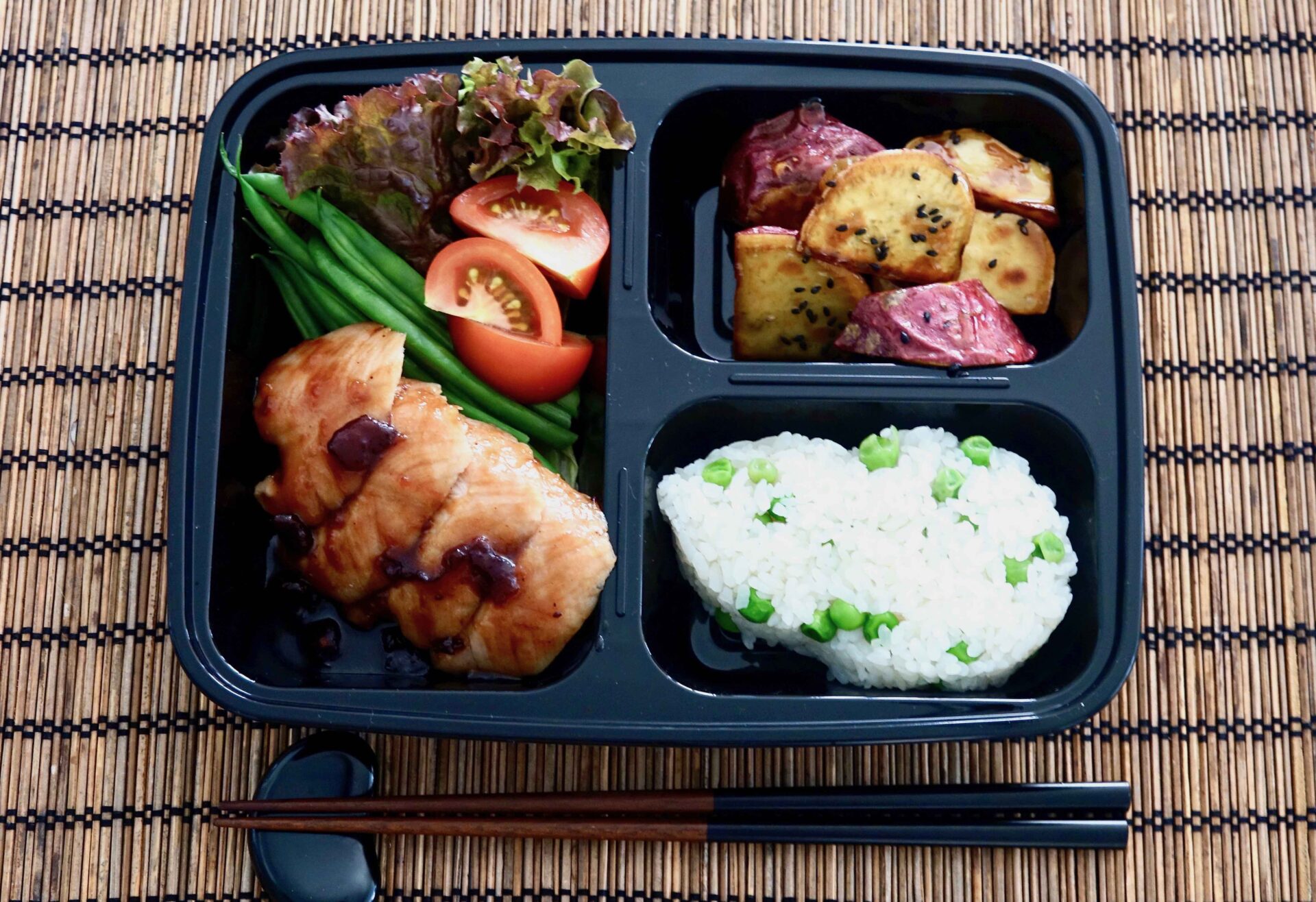Onigiri Bento Lunch is a typical Japanese meal taken to schools and workplaces. It contains rice balls with various fillings and nori seaweed, and small side dishes. Because bento lunches are usually prepared in the morning when time is limited, they shouldn’t be too elaborate. Unless you’re willing to wake up very early to cook everything, all components except onigiri can be prepared the night before. Most side dishes can be leftovers from the previous night’s dinner. Simply make a little extra food and set it aside with the bento in mind.
Nori Bento or Nori Ben is a Bento lunch box filled with Steamed Rice, Nori roasted seaweed, fried fish, and other side dishes. It’s been one of the most widely known and loved Bento for a long time in Japan. Nori Bento is nothing complicated or fancy, but it’s just a comforting kind of Bento any time.
Tamagoyaki is a popular Japanese rolled omelette that is commonly eaten for breakfast or packed in bento lunch. You can make a plain Tamagoyaki or mix in many different ingredients for flavor variation. Today, we added a canned tuna and chopped green onions. An entire can of tuna (in water) can be added directly in the egg mixture, which will make it almost like Dashi. It’s packed with umami and quite satisfying with added protein. If you do not have a Tamagoyaki pan, you can simply make this into a regular omelette in a frying pan. It’s so simple to make with easy to find ingredients.
Mame Gohan is Steamed Rice with green peas mixed in. It is a classic spring-time rice dish when green peas are in season. In many Mame Gohan recipes, fresh green peas are often cooked with rice at the same time, but cooking green peas separately from rice, and mixing in later, keeps the peas crisper and keeps their bright color which suits a more springy look. Mame Gohan is nothing fancy, but it is eaten to cerebrate spring and to bring seasonal flavor to the table in Japan.
Demon Slayer Bento (鬼滅の刃 牛鍋弁当) is a popular Bento that appeared in the mega-hit anime movie Demon Slayer: Kimetsu no Yaiba. It is a beef bowl or Sukiyaki beef over Steamed Rice in a Bento box. Whether you like this anime series or movies or not, this is one of the great tasting train station Bento of all time.
Spam Musubi is a Rice Ball with grilled Spam on top. The whole thing is wrapped with a strip of Nori seaweed. It is a popular Hawaiian dish but also found in some regions of Japan.
In addition to Onigiri, Musubi or Omusubi is another word for rice ball in Japanese. Spam meat was a combat ration for soldiers in the American military during World War II. After Japanese-American soldiers came back to Hawaii after the war, Spam turned into a popular local food when they brought the canned meat with them. Areas in Japan that have a big American military presence, especially Okinawa, also have a lot of food from the American military after the war, and Spam dishes became popular for restaurant and home food.
Noritama Furikake is a rice seasoning made with egg and Nori roasted seaweed. It is a very popular kind of Furikake, and used often over Steamed Rice in Bento boxes or Onigiri rice balls. Sweet flavored egg granules and salty Katsuo bonito flakes give a lot of flavor to simple white rice.
Onigirazu is free form Onigiri, steamed rice and filling is merely wrapped with large sheet of Nori roasted seaweed. While Onigiri is shaped and formed by hands, there is no need to do that step for Onigirazu. It is very easy and quick to make it without a mess.
Nikumaki Onigiri is a rice ball wrapped with thinly sliced beef and cooked in sweet soy sauce. Although it’s still called Onigiri, Nikumaki Onigiri is a more substantial and satisfying meal than normal Onigiri which is usually wrapped in Roasted Seaweed.
2020 has been crazy for many people including us at Japanese Cooking 101. Who knew that a once-in-a-century kind of pandemic would swirl our lives into chaos this year? With two of us from different households working together to make our videos, we have taken some time off since the lock downs in the end of March in California. Our decision was simply to keep our immediate and extended family members and people surrounding us safe. We have been carefully watching numbers and the medical situation in California, and finally have decided to ease back into a modified version of our normal schedule of video makings. If you are regular visitors to our website and YouTube subscribers, thank you for your patience waiting so long. We are confident we can work together again safely in the well-ventilated kitchen with good precautions such as keeping social distances, wearing masks, and following good hygiene practices.
